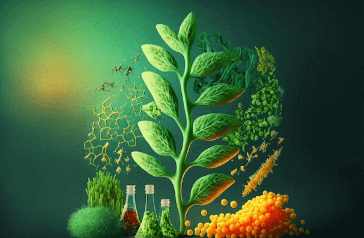Question
a.
True
b.
False
c.
May be True or False
d.
Can't say
Posted under Tissue Engineering
Interact with the Community - Share Your Thoughts
Uncertain About the Answer? Seek Clarification Here.
Understand the Explanation? Include it Here.
Q. Ross Harrison was the first one to develop a neuronal cell line in the year 1912. This was followed by the development of stem cell lines by Alexis Carrel.
Similar Questions
Explore Relevant Multiple Choice Questions (MCQs)
Q. Who invented the technique of cell culture?
View solution
Q. Thin split thickness skin grafts were first introduced in 1872 by ______ in France, and later by ______ in Germany in 1874.
View solution
Q. When was the term “Tissue engineering” coined?
View solution
Q. What is the Goal of Tissue Engineering?
View solution
Q. The driving force behind the conceptualization of in vivo culturing of tissues was the limited number of donors available and graft-rejection by the immune system.
View solution
Q. Prosthetic devices are capable of restoring normal function, and the number of organ donors is always way less than required.
View solution
Q. Which is the Competent Authority for tissues and cells in the United Kingdom?
View solution
Q. Title ______________ constitutes of a comprehensive regulatory Framework for the producers of human cells, tissues, and cellular and tissue-based products (HCT/Ps).
View solution
Q. Which Act governs the manufacture of HCT/Ps?
View solution
Q. Umbilical cord blood stem cells are an example of 361 HCT/Ps that meet the criteria in Title 21 of CFR part 1271.
View solution
Q. _____________ need to register with FDA under Title 21 of Code of Federal Regulations (CFR).
View solution
Q. Name one 361 HCT/P which cannot be imported.
View solution
Q. Which of the following Tissue Engineering products has been approved by the European Medicines Agency (EMA) as an Advanced Therapy medicinal product (Drug)?
View solution
Q. What is the main component of the tissues in our body?
View solution
Q. What was a loose belief on which the miasma theory was based on?
View solution
Q. Tissue transplants usually give rise to a ______ response.
View solution
Q. Tissue Engineering is a branch of Biotechnology which relies on the knowledge available in the other branches of Biotechnology like biochemistry, cell biology, immunology, and genetics.
View solution
Q. _________ approach of tissue engineering facilitates the self-repair of tissues.
View solution
Q. Allo-transplantation is a technique of transplantation of cells in which the cells are derived from a genetically identical donor.
View solution
Q. ____________ is a very important component in tissue engineering, which incorporates the three important elements, cells, biomaterials, and growth factors.
View solution
Recommended Subjects
Are you eager to expand your knowledge beyond Tissue Engineering? We've handpicked a range of related categories that you might find intriguing.
Click on the categories below to discover a wealth of MCQs and enrich your understanding of various subjects. Happy exploring!








